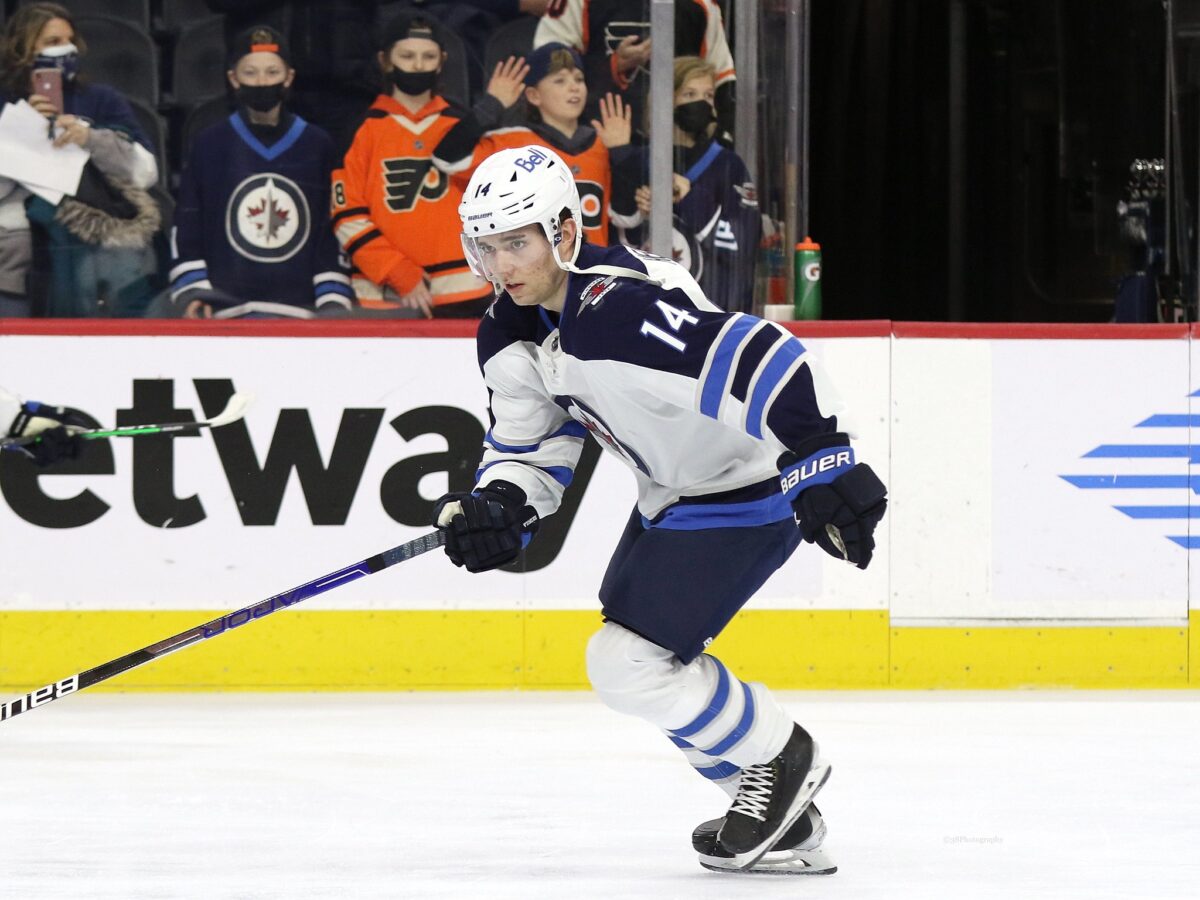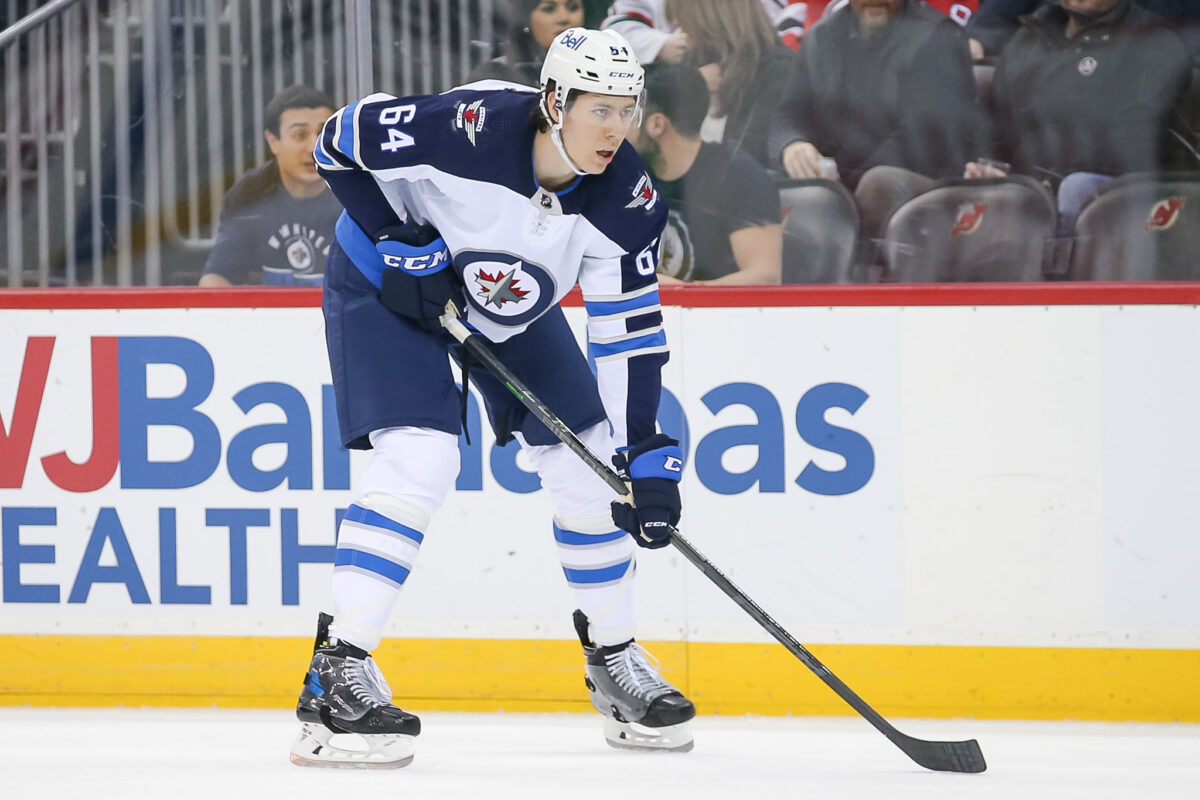The Winnipeg Jets have begun finalizing their opening night roster. The roster will need to be finalized on Tuesday, and they will get in a few skates before their opening game on Friday against the New York Rangers.
One decision they made on Monday was to send Ville Heinola down to the Manitoba Moose. The 20-year-old defenceman dominated the American Hockey League (AHL) last season, putting up 26 points in 41 games and shouldering big minutes.
The demotion of Heinola has raised plenty of questions about the coaching staff and his ability to play at the NHL level. Was this the correct decision? If he is to ever be a successful top-four defenceman, he needs to start playing meaningful minutes sooner rather than later.
Related: Kovacevic Gives Canadiens Options on Defense
A major contributor to this issue is general manager Kevin Cheveldayoff. Many people identified the logjam on defence and expected a trade that would help the bottom-six forward group. Instead, the Jets made no moves and it has cost them more than just Heinola’s development. Johnathan Kovacevic, a 24-year-old defenceman who developed very quickly in the AHL last season, was claimed off of waivers by the Montreal Canadiens.
Heinola Needs NHL Reps to Continue His Development
The former first-round pick of the 2019 NHL Entry Draft played an extremely vital role for the Moose last season and thrived in it. He will return to that role for the early portion of the 2022-23 season.
At this point in his career, he has only registered 25 games at the NHL level. This needs to change for him to develop properly as a defender. His struggles come in the defensive end, where he can sometimes be muscled off the puck and beat to the high-danger areas. The issue with sending him back down is that these issues will not improve with yet another year in the AHL.

Heinola has been labelled with top-four potential since he was drafted. His puck-moving abilities, along with his ability to jump into the rush make him an intriguing defence prospect. He dominated the World Juniors, the AHL, and the Jets are holding him back from taking the next step. They are a team that struggled mightily with zone exits a year ago and could use a defenceman like him to help patch those errors.
Heinola’s Competition Had Underwhelming Training Camps
People weren’t impressed with Heinola’s training camp, but Logan Stanley and Dylan Samberg struggled just as much as the young defender. Out of the three young defenders, Heinola showed the most offensive upside at both even strength and on the power play.
Stanley requiring waivers to join the Moose played a big role in this decision, but failing to ice the team’s best lineup because of waivers is a failure by the organization. The goal is to ice the best lineup every game, and by sending Heinola down the Jets are failing to do that.

Many people will point to the penalty-killing abilities as the main reason this decision was made, but the truth is the Jets have plenty of capable penalty killers already on the roster. Josh Morrissey, Brenden Dillon, Dylan DeMelo, and Nate Schmidt have all killed penalties in the past and can do it effectively. Giving Heinola that final spot puts him in a position to play on the second power-play unit, which is an area where he thrived last season.
If Not This Season, Then When?
The Jets will be facing this issue for years to come. Morrissey, Neal Pionk, DeMelo, Dillon, and Schmidt are all under contract for another two seasons. Samberg and another Moose defenceman Declan Chisholm lose their waiver-exempt status next season. In fear of losing them for nothing, Heinola will be sent down to the Moose yet again because of waivers. Samberg and Stanley will be due for a new contract after this season, and assuming they re-sign, when will Heinola slot in?
| Josh Morrissey | Dylan DeMelo |
| Brenden Dillon | Neal Pionk |
| Logan Stanley | Nate Schmidt |
| Dylan Samberg | Kyle Capobianco |
Injuries aside, Heinola will spend yet another season trying to earn a spot. Samberg and Stanley failed to earn a spot, but are given the benefit of the doubt due to their size and penalty-killing abilities. With a bottom-six that is likely to struggle, it’s puzzling that the offensive-minded defender wasn’t given the spot to help provide a few more goals.
The modern NHL promotes puck movement and playing defence by having a good offence. By making this move, Rick Bowness and his coaching staff are admitting that they are okay with having one good offensive line and shutting it down for the rest of the lineup. Yes, this strategy could work, but running it is not worth the risk of stunting your top defensive prospect’s development.